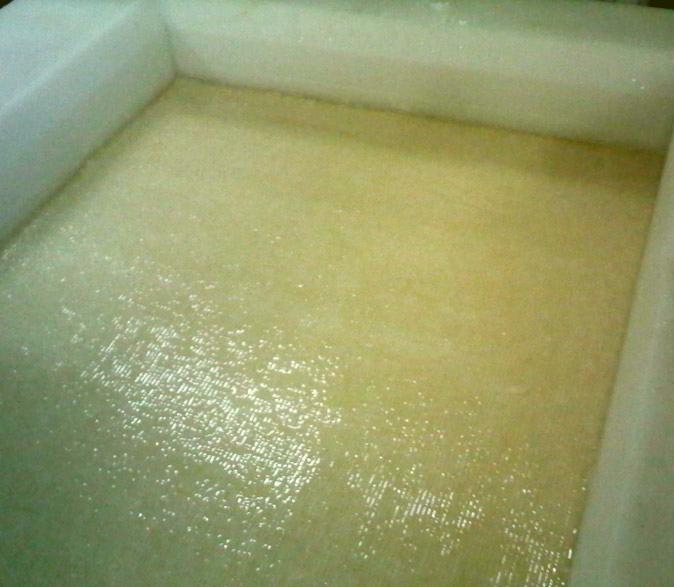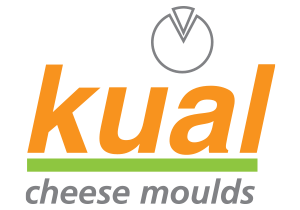
The problem is that for the pressing work with this mould system, a lot of handling is required and, thus, a lot of labour, because normally the process entails the following:
- Cheese dressing and pouring into moulds.
- Putting mould in the press.
- During the pressing process, we must remove the mould from the press, the cheese from the mould, remove the cheesecloth, turn it over, place back the cheesecloth, put it again in the mould and finally spin mould position (if it was upsides, put it downsides and vice versa), unless we are dealing with horizontal presses.
- Depending on the cheese, this process, during the pressing period must be repeated more than once.
- When pressing is finished, the cheese must be removed from the mould, the cheesecloth is removed and rough edges caused by the cheesecloth in the pressing period are cut.
- Finally, the cheese goes to brining.
As you may have seen, this work is complex, even describing it, but in addition to all of this, there are previous tasks, which are also tedious, costly and which involve labour, related to cleaning and preparing the cloth, that is to say, as soon as the pressing process is finished, cheesecloth must be washed, sterilized and left ready for next day.
Evidently, with all this handling, automating the entire process would be practically impossible, that is why for the purposes of technological innovation with this aim, the MICRO-PERFORATED MOULD system was invented. This system allows the cheese to be put into the mould without cloth and to remain there during the entire pressing time, without the need to remove it, turn it over, etc. Cutting is not even necessary at the end of the pressing process, that is to say, it does not cause cutting and, thus, it avoids losses or reprocessing that mass.
All these advantages are more than significant, but we must add that this system decreases by an average of 50% the normal pressing time. To illustrate, we could say that the traditional pressing time of a hard cheese, parmesan, sbrinz type, takes from 4 to 5 hours; with this system we lower the time to 2 hours approximately.
For block, gouda or prato cheese, for example, traditional pressing takes from 2.5 to 3 hours, while with this system we lower the time to 1 hour and 15 minutes approximately.
Other benefits are that its robustness allows us the system automation, in the case of the KUAL moulds, used by us, and we add a further advantage to micro-perforated moulds de plaza, because they are the only ones manufactured in one piece by injection.
KUAL is the only company that has the patented technology to create micro-perforations on curved surfaces, while the rest of the companies can only perforate flat surfaces, then cut them and weld the pieces to form the mould. The problem of this process is that welds, no matter how well-done, are cracked and broken over time, resulting in significant problems, because micro-organisms tend to gather in the cracks, and not even high pressure cleaning can remove them, leading to contamination problems in cheeses.
The interesting aspect of KUAL technology is that by being one injected piece, we shape it the way we want; for example, ball, liz flower, pyramid type, etc. We can even put the company name on the topside, so that it is branded in the cheese.
This post is also available in: Spanish French Portuguese (Brazil) Russian
